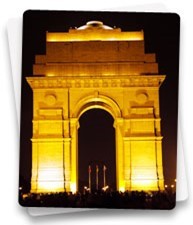
History of Delhi
Delhi, officially the National Capital Territory (NCT) of Delhi (ISO: Rāṣṭrīya Rājadhānī Kṣētra Dillī), is a city and a union territory of India containing New Delhi, the capital of India. Situated on both sides of the Yamuna river, but primarily to the west or beyond its right bank, Delhi shares borders with the state of Uttar Pradesh to the east and with the state of Haryana in the remaining directions. Delhi became a union territory on 1 November 1956 and was designated as the NCT in 1995. The NCT covers an area of 1,484 square kilometres (573 sq mi). Delhi's city proper population is over 33 million. Delhi's urban agglomeration, which includes the satellite cities Ghaziabad, Faridabad, Gurgaon, Noida, Greater Noida and YEIDA city located in an area known as the National Capital Region (NCR) making it the largest metropolitan area in India and the second-largest in the world (after Tokyo).
Welcome to One Stop Online Solution for Project Monitoring
Please use your login ID & password to access the online system.
